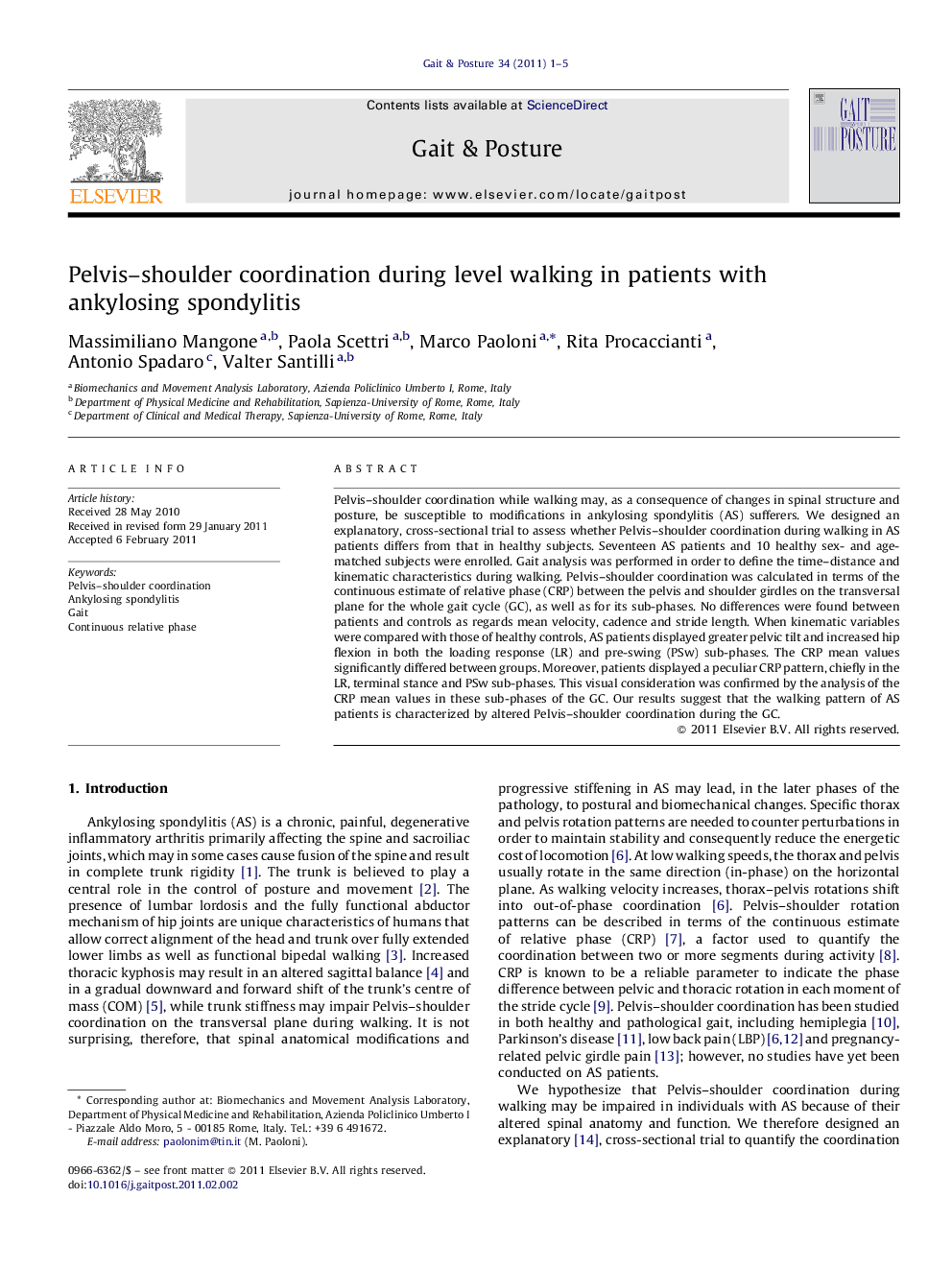| Article ID | Journal | Published Year | Pages | File Type |
|---|---|---|---|---|
| 6208280 | Gait & Posture | 2011 | 5 Pages |
Pelvis-shoulder coordination while walking may, as a consequence of changes in spinal structure and posture, be susceptible to modifications in ankylosing spondylitis (AS) sufferers. We designed an explanatory, cross-sectional trial to assess whether Pelvis-shoulder coordination during walking in AS patients differs from that in healthy subjects. Seventeen AS patients and 10 healthy sex- and age-matched subjects were enrolled. Gait analysis was performed in order to define the time-distance and kinematic characteristics during walking. Pelvis-shoulder coordination was calculated in terms of the continuous estimate of relative phase (CRP) between the pelvis and shoulder girdles on the transversal plane for the whole gait cycle (GC), as well as for its sub-phases. No differences were found between patients and controls as regards mean velocity, cadence and stride length. When kinematic variables were compared with those of healthy controls, AS patients displayed greater pelvic tilt and increased hip flexion in both the loading response (LR) and pre-swing (PSw) sub-phases. The CRP mean values significantly differed between groups. Moreover, patients displayed a peculiar CRP pattern, chiefly in the LR, terminal stance and PSw sub-phases. This visual consideration was confirmed by the analysis of the CRP mean values in these sub-phases of the GC. Our results suggest that the walking pattern of AS patients is characterized by altered Pelvis-shoulder coordination during the GC.
